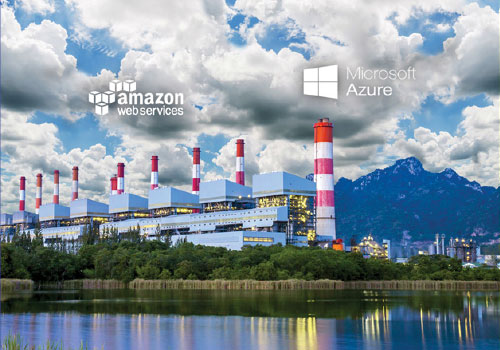- By Michael Risse
- IIoT Insight
Summary
The IoT platforms market is at the height of its confusion before a period of consolidation, standardization, and simplicity for users.
Industry analyst LNS just released its Solution Selection Matrix for Industrial Transformation (IX) Platforms, a comprehensive guide intended to help process manufacturers develop, evaluate, and even select from a short list of IX platform vendors. LNS joins a crowded set of offerings including Gartner’s Magic Quadrant for Industrial IoT Platforms (October 2020), the Forrester Wave for Industrial IoT Platforms (Q4 2019), and IDC’s MarketScape for Worldwide Industrial IoT Platforms in Manufacturing (June 2019). This does not count other unranked vendor lists from ARC Advisory Group or ABI Research (Q4 2019). And apologies in advance for all the analyst lists and quadrants and comparisons that I failed to include.
Taken together, these comparisons list more than two dozen Internet of Things (IoT) platforms, with no two analyst lists having the exact same companies. There is some consistency among the top-ranked vendors—congratulations to PTC/ThingWorx and Hitachi Lumada—but the various scoring models, and in particular the diversity of vendors, is a source of concern for end users.
Why? Because this is not the industrial automation market, where the top 10 vendors can survive and compete, divided by vertical industry focus, geography, and a history of proprietary, vertically integrated offerings.

Instead, the IoT (or IIoT) platforms market is the software world, and what happens in software markets is that offerings consolidate: Good luck finding two or three vendors, much less six in some software segments. Cloud computing? The majority of the market is just two vendors, Microsoft Azure and Amazon Web Services (AWS). Enterprise resource planning applications have one vendor, SAP, and maybe Oracle. The network effect, economies of scale, and relatively low switching costs add up to size being an advantage. To the victor go the spoils.
Which is why the analysts are so engaged in the IoT platform discussion now—because most of the 24+ vendors in the market will not survive the natural attrition common to software markets. They will be acquired or consolidated, and a few of the niche vendors will go out of business. This is happening already with Cumulocity being acquired by Software AG, ThingWorx by PTC, and Carriots by Altair. Thus, vendor viability is a real and appropriate consideration for end users.
A second concern is the public cloud players, called “hyperscalers” by some analysts. Azure and AWS do not, as of today, have as many of the capabilities as the specialized IoT vendors, and the public cloud rankings in the comparisons confirm this. But Azure and AWS can buy electricity at the lowest rates, and they can afford the capital expense of putting data centers in any country close to customers and power supplies. So, while Azure and AWS get mixed IoT platform scores today, they play the long game and should not be discounted.
Beyond viability and the looming interests of Azure and AWS in the IoT market, there is a final consideration for investing in IoT platforms. Given the risks of a decision and the challenges of investing in a platform or DIY stack of solution components to deliver data securely to the cloud, will it be worthwhile from a return-on-investment perspective?
Many of the platforms, for example, claim to support analytics but are behind the market in terms of contextualization, self-service, integrated machine learning, and other features. This means the last mile, the true value of insights to improve business outcomes, are still out of reach after the creation, collection, and storage of the data. Data is good, but it is outcomes that matter.
The IoT platforms market, as all the analyst reports demonstrate, is at the height of its confusion before a period of consolidation, standardization, and simplicity for users. In the meantime, caveat emptor.
Reader Feedback
We want to hear from you! Please send us your comments and questions about this topic to InTechmagazine@isa.org.


